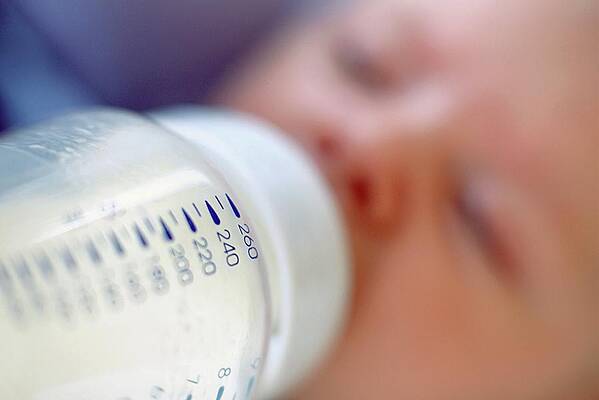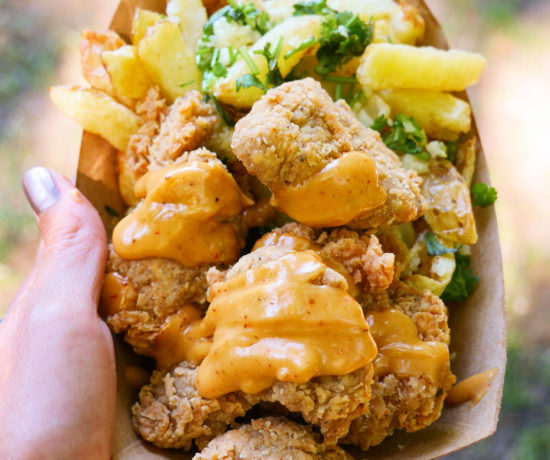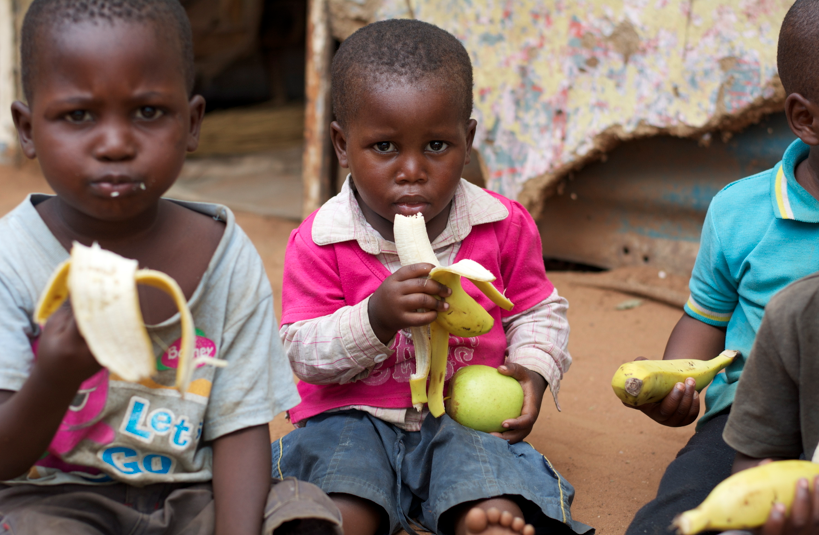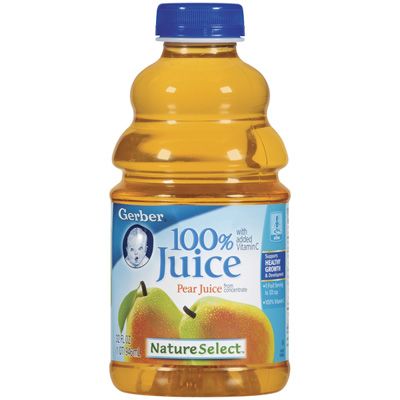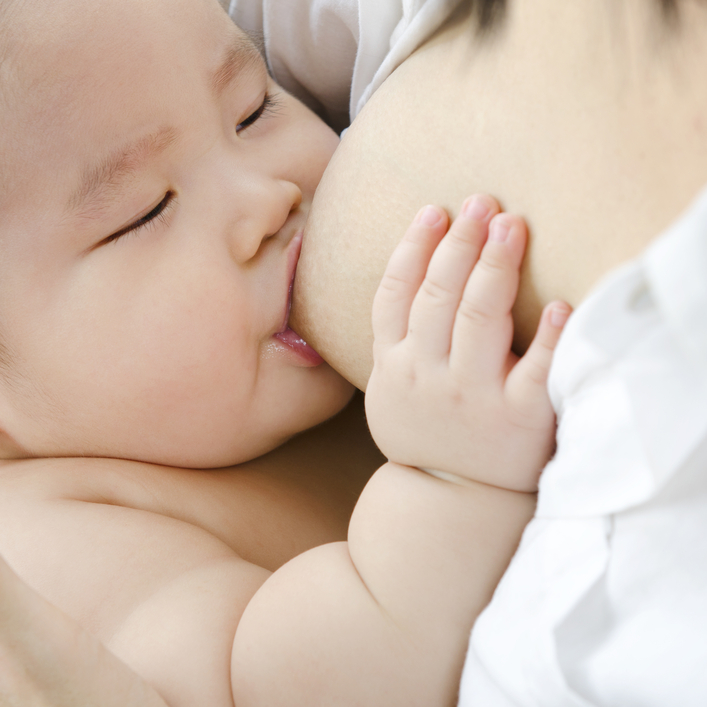Feeding baby protein
The Right Foods for Each Stage
Written by Gina Shaw
In addition to breast milk or baby formula, here are the solid foods you can introduce to your baby’s diet at each stage of development - or if your baby is ready. But remember, you can exclusively breastfeed your baby for the first 6 months.
There is no evidence that delaying the introduction of allergenic foods, including peanuts, eggs, and fish, beyond 4 to 6 months prevents atopic disease. There is now evidence that early introduction of peanuts may prevent peanut allergy.
When | What | How to Prepare |
4-6 months | Single-grain cereals (Fortified cereals give your baby iron, an important nutrient they need now. A baby is born with a natural reserve of iron that begins to deplete around 6 months of age. | Mix with baby formula or breast milk, or water on occasion. |
6-8 months | Pureed or strained fruits (bananas, pears, apples, apricots, prunes)
Yogurt (whole milk or soy based) | Wash all fresh fruits, then bake, boil, or steam until soft. You can puree in either a blender or a food processor, or use a small hand food mill; add a little liquid like breast milk, baby formula, or water at first. Make it watery at first, then use less liquid as your baby gets used to solid foods.
Any of these foods can be mixed with rice cereal if added texture is needed |
| Pureed or strained vegetables (avocados, carrots, peas, potatoes, squash)
These are referred to as stage 1 or 2 foods in the baby section of the grocery store. | Wash all fresh vegetables; then bake, boil, or steam until soft. |
| Protein: pea-sized pieces of cooked chicken, turkey, or other meats, or boneless fish; beans such as lentils, black, red, or pinto beans. (Doctors used to recommend waiting a bit to introduce meats, but now they note these are a good source of iron, particularly for breastfed babies, who may not be getting enough. | Cut meat or fish into very small pieces; cook and mash or cut up beans. |
8-10 months | Mashed fruits and vegetables Stage 3 foods in the baby section Scrambled eggs | No need to puree; just cook foods such as carrots and sweet potatoes until soft, or mash up soft foods like bananas and avocados. |
| Finger foods like small o-shaped cereals, teething crackers, or small pieces of soft fruit, cooked pasta, or vegetables | Cut up to make sure the pieces are small enough for your baby to swallow without choking. |
| Dairy: small amounts of cottage cheese, or any pasteurized cheese | Cut cheese into small pieces. |
| Eggs (Doctors used to recommend waiting to introduce eggs and other allergens until baby reached at least 4 months, but new American Academy of Pediatrics guidelines say there is no evidence that waiting prevents food allergies.) | Scramble, or hard-boil and cut into small pieces. |
10-12 months | Baby can try eating most of the foods you eat now, if they are cut up or mashed properly so that they can safely chew and swallow. | As your baby gets more teeth and learns to chew more effectively, they will begin to be able to eat larger pieces of food. Continue to monitor their chewing carefully, and when in doubt, cut pieces smaller than you think necessary. Be especially careful with round, firm foods like grapes and hot dogs, which pose a particular choking hazard to babies. Chop these into very small pieces. |
Waiting a few days after introducing a new food to your baby is a good way to monitor for allergic reactions. Emerging research has shown that introducing multiple foods together is safe, and may help the immune system have a lower risk of developing food allergies, but more studies are needed. Check with your doctor for what’s best for your baby.
Emerging research has shown that introducing multiple foods together is safe, and may help the immune system have a lower risk of developing food allergies, but more studies are needed. Check with your doctor for what’s best for your baby.
10 Protein-Rich Finger Foods for Baby-Led Weaning
When your baby is starting solids it’s tempting to stick with fruits, vegetables, and grains like cereals or toast. But, babies need other nutrients, like protein and fat in their diets too. These mostly single-ingredient, protein-rich finger foods are an easy place to start.
There are good reasons to add protein-rich foods to your little one’s daily diet, beyond, well, the protein. First, if your little one is breastfeeding, at about six months she will need added sources of iron and zinc in her diet. (Formula is fortified, so if your baby is formula-feeding, this is less of a concern.) Iron and zinc are both crucial minerals for your baby. Iron allows blood cells to carry oxygen to muscles and organs and is key for brain development. Zinc is important for a strong immune system.
Iron allows blood cells to carry oxygen to muscles and organs and is key for brain development. Zinc is important for a strong immune system.
And, many protein-rich foods also happen to be good sources of iron and zinc, such as tofu, lentils, beef, chicken, and eggs. Keep in mind that the iron and zinc from animal sources is more easily absorbed than that from plant sources.
Protein-rich foods, especially dairy products, can also be full of beneficial fats (which babies need for vitamin absorption, satiety, and brain development) and other nutrients like calcium and Vitamin D. Just a reminder that babies shouldn’t drink cow’s milk as a primary beverage until age 1, but it’s a-ok to serve them yogurt and cheese.
Finally, when your baby is starting solids she’s also taste-training. If you introduce meat and/or other protein sources now, she’s more likely to continue to enjoy them as she gets older. Remember, your child will never be more open to new flavors than she is now, so take advantage!
If you’re spoon-feeding, consider stirring whole-milk Greek yogurt into fruit or vegetable purées for a kick of protein. And, of course, meat, fish, bean, and lentil pureés are also great sources. To get started you can try these recipes: Baby’s First Fish Dinner and Red Lentil and Spinach Purée, both from Real Baby Food.
And, of course, meat, fish, bean, and lentil pureés are also great sources. To get started you can try these recipes: Baby’s First Fish Dinner and Red Lentil and Spinach Purée, both from Real Baby Food.
But, what if you’re practicing baby-led feeding? Good news–there are lots of easy options! Here are my favorite, mostly single-ingredient options.
10 Protein-Rich Finger Foods for Baby-Led Weaning
- Cooked and flaked fish, such as cod or omega-3-rich salmon; spritz with lemon for extra flavor.
- Chickpeas or other beans, lightly smashed. If canned, choose low or no-sodium beans and rinse well and drain.
- Lentils. This will be messy, but your baby can pick them up by the handful. Or, smash with olive oil and smear on toast.
- Baked or poached and shredded chicken breast or thigh. This is especially nice tossed with a little veggie purée.
- Slow-cooked or pressure-cooked beef, pork, or lamb (RELATED: How to Prep Meat for Baby-Led Weaning)
- Chopped hard-cooked eggs, yolks and whites
- Shredded medium-firm cheese, such as cheddar, mozzarella, or Monterey Jack
- Cubed firm tofu
- Chopped meatballs or ground meat patties
- Toast strips spread with peanut butter, almond butter, ricotta cheese, cream cheese, or hummus (RELATED: 15 Toast Toppers for Babies and Toddlers)
Remember that finger foods need to be a safe texture and size to help prevent choking.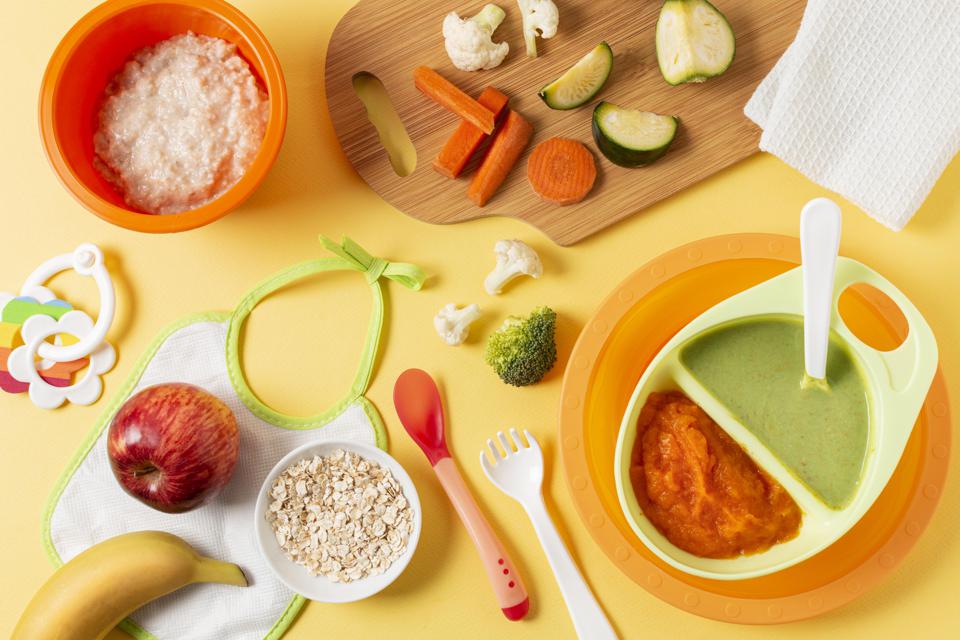 They should be soft enough to be mashed with gentle pressure between your thumb and forefinger. In terms of size, they should either be shredded, cut into strips about the size and length of your pinky finger, or cut into chickpea-sized pieces.
They should be soft enough to be mashed with gentle pressure between your thumb and forefinger. In terms of size, they should either be shredded, cut into strips about the size and length of your pinky finger, or cut into chickpea-sized pieces.
Looking for more baby-led weaning ideas and family feeding tips? Sign up for my newsletter! As a thank you for signing up, I’ll send you three of my favorite healthy smoothie recipes for the whole family. I look forward to being in touch!
Jenna Helwig
[email protected]is just about the important. What to feed and how much food to give the child for complementary foods. Part 1. Proteins — Mama Nika
Proteins are the building blocks of our body, which make up everything: tissues, muscles, enzymes, nails and hair, etc. It's all about proteins. For the full development and growth of the child, protein is indispensable. With insufficient energy intake from fats and carbohydrates, proteins can also synthesize it.
Amino acids are the building blocks of proteins. They form new tissue, which is why they are so important at an early age. Not all amino acids can be synthesized by the body, but they can be obtained from food. If the body is deprived of essential amino acids, it begins to decompose its own proteins to produce them.
In theory, that's all. From this it becomes clear that protein food is important and necessary for the child. At the same time, a varied intake of protein is important for the body. As an animal: meat, poultry, fish, eggs and dairy products; and vegetable, as a rule, these are legumes and some grains: amaranth, wheat. There is very little protein in vegetables and fruits, these are representatives of carbohydrates.
When to introduce protein foods and features of introducing products into the children's diet
Everything would be fine if it were not for the peculiarity of the formation of the digestive system in children under one year old. The immaturity of enzymes and other environment of the intestinal juice impose their own limitations.
Breast milk proteins have the highest value,
eggs, then animal protein and only then vegetable protein.
According to WHO studies, up to 6 months. the baby has enough protein in breast milk (or 100% GM equivalent), provided that the baby receives its full energy volume (see the table in the article "energy density of food")
Simple conclusion, isn't it - breastfeed according to the needs of the child or on demand (how much he asks - give as much, offer yourself if you play too much). And let them say that “he eats often”, you already know: he eats, it means he grows.
Protein malnutrition is always characterized by low body weight, and in chronic form, and low growth, characteristic of a certain age.
At the same time, diets with an excessively high content of protein (other than breast milk) also do not provide any benefits and can cause negative consequences on the part of the liver, kidneys and gastrointestinal tract ☝️
Hence the conclusion: gradualness and priority for breastfeeding mixtures).
See the food entry table for the order in which protein foods are introduced according to WHO. https://www.mama-nika.ru/wp-content/uploads/2018/01/Mama-Nika-Ru-prikorm_perv_6_nedel_tablica.pdf
Brief introduction of products
Whole cow or goat milk is not recommended to be introduced earlier 12-18 months of life. This is due to an excess protein load, the risk of allergic reactions, loss of iron through the intestines, etc. Closer to the year, it is possible to add these products to cereals, but on condition that the child does not have allergic reactions. The risk of early introduction of milk is microbleeding in the intestine. ☝️
Curd. The usual non-adapted cottage cheese is a concentrate of cow's milk protein, contains large-dispersed casein molecules. You can enter it no earlier than 12-14 months. Special ☝️ baby cottage cheese adapted for baby food (contains a protein of a different structure) can be introduced from 9-10 months in small volumes.![]() From 1/2 teaspoon to 25-30 grams. After a year up to 50 grams. Give every other day.
From 1/2 teaspoon to 25-30 grams. After a year up to 50 grams. Give every other day.
☝️ Protein dishes are no longer given at the same time with cottage cheese.
Kefir from 8-9months (in some sources it is possible earlier). However, due to the fact that kefir is a liquid food and has a lower calorie content than breast milk, it is not a complete complementary food product and is offered for a change. It is entered slowly, since 5 ml. Volume 100-150 ml. After a year 200 ml.
Fish. An essential protein product, but a high allergic index. From 12 months cod, hake, pollock, pike perch, sea bass are allowed. If the child is allergic - from 2-3 years.
Soups on fish broth up to 1.5 - 2 years are strictly prohibited.
Egg white. After 12 months Also watch for allergic reactions.
Meat. First, hypoallergenic types of meat are introduced: rabbit, turkey, you can horse meat. Next is the veal. After a year beef, lamb, chicken and offal. Wild meat and pork not earlier than 1. 6 - 2 years. It is important to remember that meat is digested for a long time and it must be introduced in the morning - at lunchtime.
6 - 2 years. It is important to remember that meat is digested for a long time and it must be introduced in the morning - at lunchtime.
Semi-finished products (sausages, sausages) not earlier than 3 years. And for me, it's not necessary at all.
Sour cream, cheese - after a year as a dressing or addition to a side dish (limited).
legumes limitedly after a year
90,000 when you can give a child protein from an egg: how to enter into complementary foodsPublished Elena Volodina
Reading time: 4 minutes
Eggs are considered extremely valuable and extremely valuable and high a nutritious food product with a huge content of nutrients, which must be included in the children's menu. But if egg yolk from a chicken or quail egg is given to a child up to a year old, then parents give egg white to babies with extreme caution.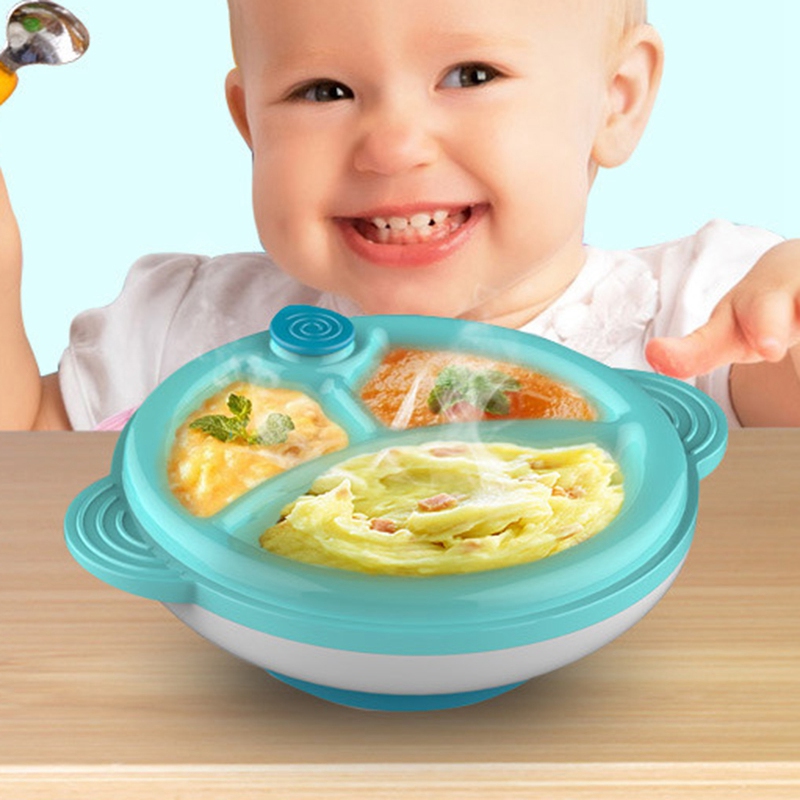 Despite the useful qualities, this product is a strong allergen. And therefore, mothers should know exactly when it is possible to give egg protein to a child and how to properly introduce it into the baby's diet.
Despite the useful qualities, this product is a strong allergen. And therefore, mothers should know exactly when it is possible to give egg protein to a child and how to properly introduce it into the baby's diet.
1 At what age can egg white be given to a child
1.1 Protein for children: beneficial properties
1.2 The dangers of chicken protein
1.3 Egg protein for a child - from how many months can be given
1.4 Rules for introduction into the diet
1.950 prepare egg whites for feeding1.6 How to choose the right
1.6.1 Related posts:
Protein for children: useful properties
Egg white is an extremely useful product for the child's body, with a unique composition and excellent nutritional qualities.
It contains:
- vitamins A, B, D, H, PP, which are important for the growth and active development of the baby;
- micro and macro elements - phosphorus, iodine, copper, iron, sodium, useful cholesterol;
- ovotransferrin and lysozyme are special elements with antibacterial properties;
- a small amount of fat allows you to introduce an egg into the diet of a baby with weight problems;
- protein contains essential amino acids and enzymes necessary for a small child and his digestive system.

Doctors' recommendations:
Is it possible for a baby to have eggs and when?
Watch this video on YouTube
This product contains animal proteins. These components play the role of "building" materials for all internal organs and systems. The benefit of protein is also evidenced by the fact that it is almost 99% absorbed by the children's digestive system.
Harm of chicken protein
Mothers need to know at what age they can give egg protein to their child, because this product often develops an allergic reaction. In such cases, pediatricians recommend replacing chicken eggs with quail eggs, since they cause allergies much less frequently.
Eating raw eggs significantly increases the risk of contracting salmonellosis. The raw product puts an increased burden on the digestive system and causes bloating, increased gas formation, and upset stools.
That is why the surface of the shell must be thoroughly washed before using the product.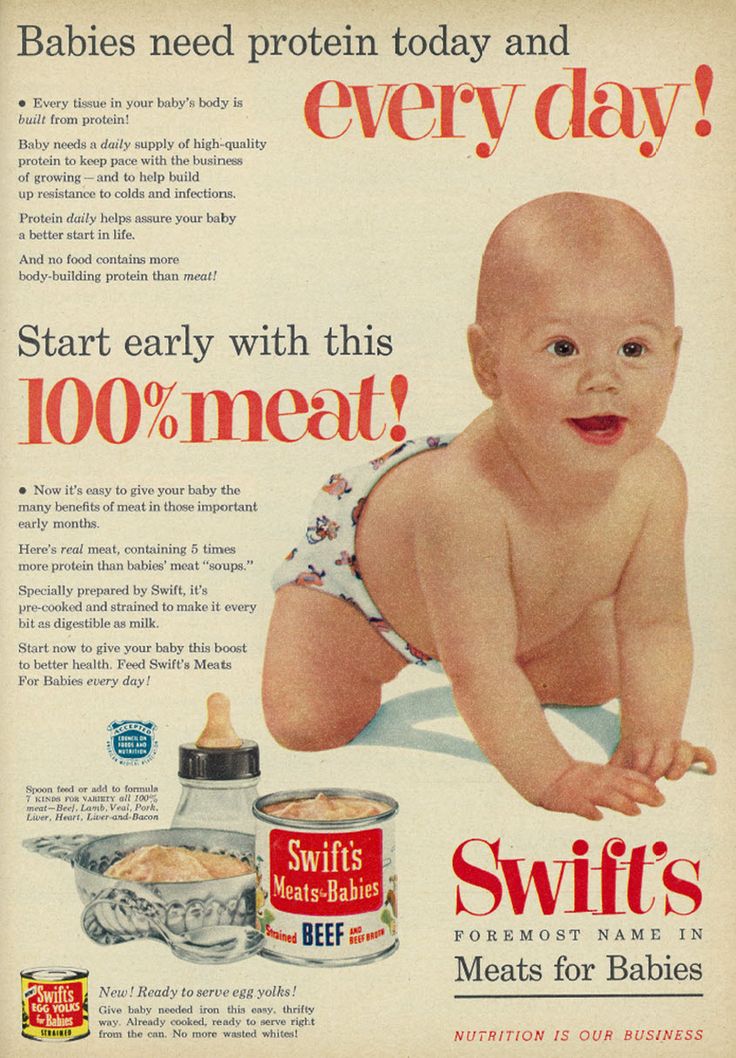 When adding eggs to complementary foods, remember that they must undergo heat treatment and only after that protein can be given to children. Eggs should not be given raw, but must be hard-boiled to avoid serious infections such as salmonellosis that cause intestinal upset, fever, and symptoms of digestive problems.
When adding eggs to complementary foods, remember that they must undergo heat treatment and only after that protein can be given to children. Eggs should not be given raw, but must be hard-boiled to avoid serious infections such as salmonellosis that cause intestinal upset, fever, and symptoms of digestive problems.
Egg white for a child - how many months can be given
Egg white can be given to a child after a year. It is better to refuse an earlier introduction to complementary foods, unlike the yolk, as this dish can cause serious allergies. With a tendency to frequent allergic reactions, protein is not given to babies until 1.5-2 years old and only after prior consultation with a pediatrician. Therefore, the table for adding protein to complementary foods is very simple:
| when artificially fed with a mixture of | after a year |
| while breastfeeding | after a year |
Rules for introduction to the diet
- The first complementary foods are given in a minimal amount - the portion should not be more than half a teaspoon.

- The best time to feed your baby is in the morning, during the morning meal. This makes it possible to trace whether a new type of food has caused an allergy.
- Protein should not be given to a baby if on that day he has tried another complementary food for the first time, feels unwell or is capricious.
If well tolerated, a little more egg food is prepared for the next day. A baby up to a year old can eat chicken 2-3 times a week, quail - 1 piece every day or every other day.
How to cook egg whites for weaning
Only hard-boiled food can be given to children under one year of age. It is strictly forbidden to treat the baby with soft-boiled eggs, as well as raw ones. This is allowed to be done only after reaching the age of 7-8.
Chicken needs to be cooked - it takes 8-10 minutes to hard-boil it. If quail eggs are used for the children's menu, they must be boiled for at least 3 minutes and only after that offer protein to the baby.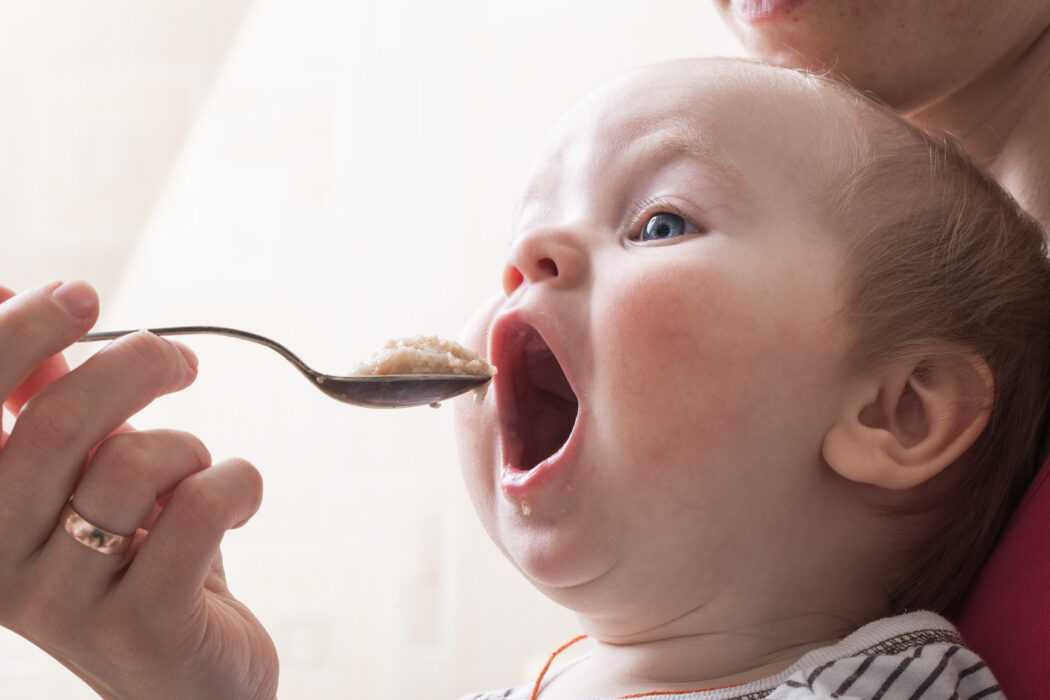
The child is also allowed to eat various protein dishes - soufflés, casseroles or steam omelets. It is prepared very simply - the base must be whipped with a few tablespoons of milk. After that, pour the mixture into a mold greased with butter and send to a double boiler.
How to choose the right one
An important role in baby food is played not only by its preparation, but also by the right choice of products. Some useful tips for eating eggs:
- Only fresh eggs purchased from trusted, trusted farms are used for baby foods;
- product must not be dented, chipped or stained in any way;
- take it in the palm of your hand and shake it hard enough - fresh product should not gurgle loudly or be very light;
- product must not be contaminated with chicken manure;
- it must be well washed before cooking;
- duck and goose are not suitable for baby food - due to the high fat content, this product is difficult to digest.

Before preparing children's meals, the product must be checked for freshness. To do this, a simple test is carried out - it must be thrown into a glass of cold water. Fresh quickly sinks to the bottom, stale product always remains on the surface of the water. Such eggs can not be consumed not only by children, but also by adults.
You can also do another test - look at the product in the light. A fresh egg has a uniform and uniform color, any darkened spots and blotches that appear through the shell indicate that the product is not fresh.
Read on the topic Quail eggs: benefits for children, at what age can be given to a child
Egg white is an extremely nutritious and healthy food that must be present in the children's diet. Pediatricians recommend introducing it into the menu after 1 year, as it is quite hard to digest. When properly administered, protein is of great benefit to the body, because it is an invaluable source of vital proteins and amino acids necessary for the full development of the child.

 You can puree in either a blender or a food processor, or use a small hand food mill; add a little liquid like breast milk, baby formula, or water at first. You can use less water for a thicker puree as your baby gets used to the new foods.
You can puree in either a blender or a food processor, or use a small hand food mill; add a little liquid like breast milk, baby formula, or water at first. You can use less water for a thicker puree as your baby gets used to the new foods.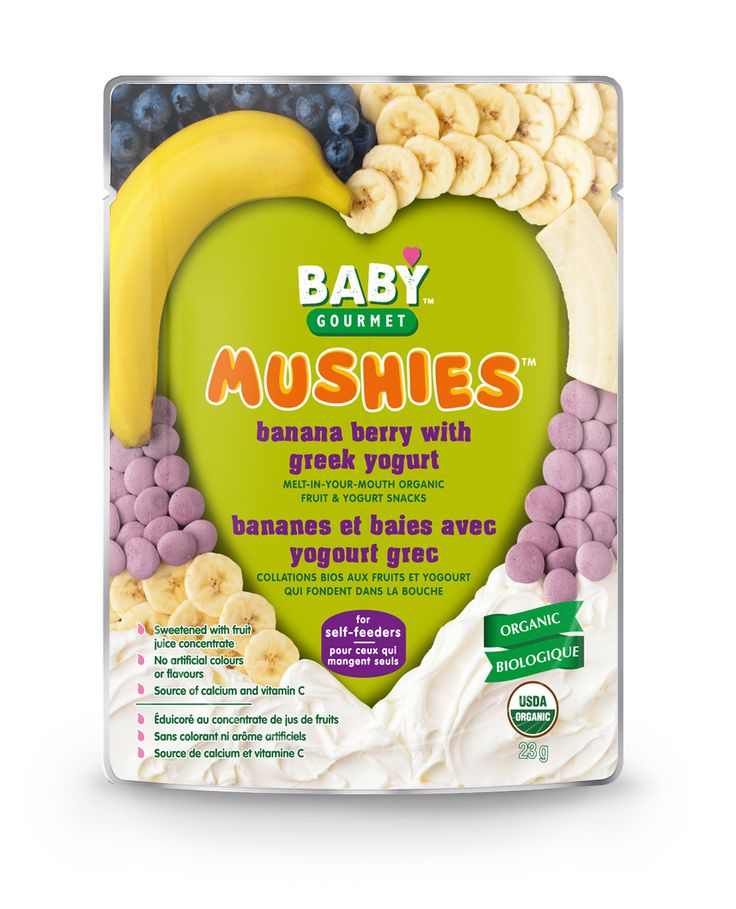
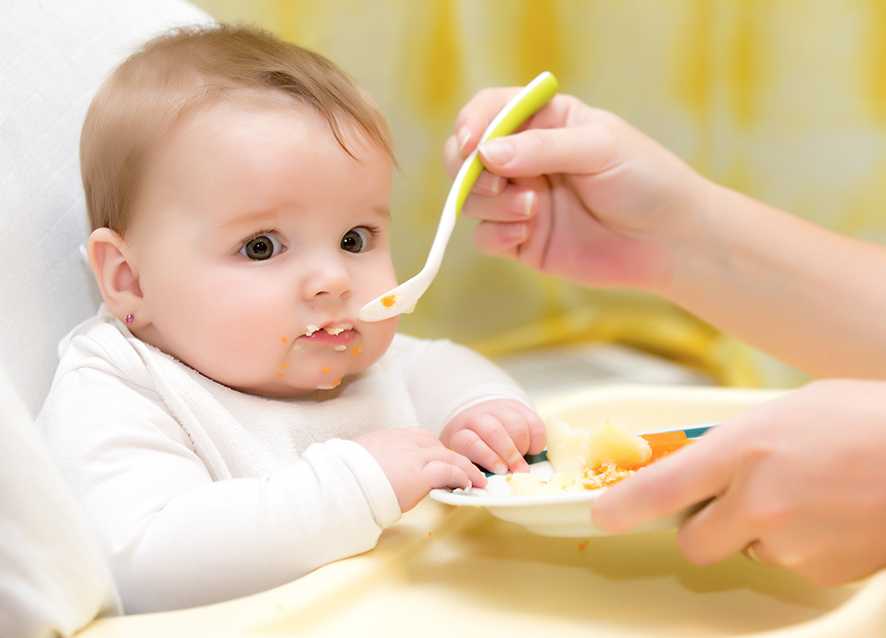 Unless you have a strong family history of allergies, the American Academy of Pediatrics now says there is no need to avoid peanut products, eggs, wheat, or fish until after one year, although many pediatricians are still cautious about eggs, peanuts and shellfish due to the strong allergic reactions sometimes associated with them. Avoid whole cow’s milk and honey until at least one year. Honey can cause a dangerous illness called infant botulism.
Unless you have a strong family history of allergies, the American Academy of Pediatrics now says there is no need to avoid peanut products, eggs, wheat, or fish until after one year, although many pediatricians are still cautious about eggs, peanuts and shellfish due to the strong allergic reactions sometimes associated with them. Avoid whole cow’s milk and honey until at least one year. Honey can cause a dangerous illness called infant botulism.